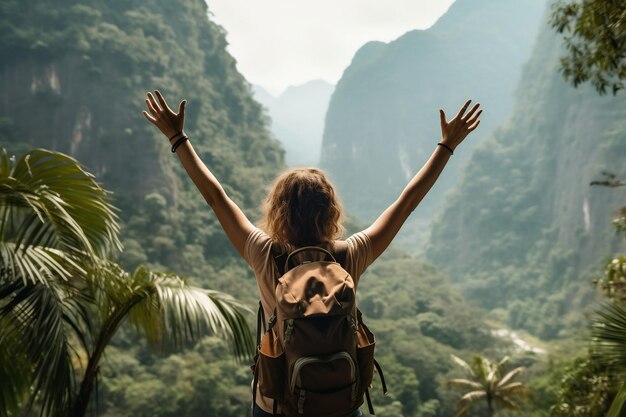Mallorca, an island of natural beauty and a popular destination for tourists in Europe today, is a beautiful island with a lot to offer. You will be surprised to see how much natural beauty the island has preserved, despite the fact that much of it has been developed as a tourist destination.
This Mediterranean island has a variety of landscapes, from sandy beaches and turquoise water to rugged rocky cliffs and calming wetlands. There are also snow-capped mountain ranges, lush Mediterranean forest and tranquil wetlands with wildlife. Every day, there is something new to discover.
1. Coastal natural parks
Each of the natural parks on Mallorca has its own unique attractions, from endemic plants and animals to a collection of rare birds. Mondrago Natural Park, a coastal nature reserve located on the south-east coastline is an amazing place to visit. The park is not just about the turquoise water and picture-perfect beaches, but also boasts wetlands and ‘Fonts de n’Alis’. It’s worth mentioning that there are many migratory bird species here.
There are wetlands on the north coast near the bays Pollenca and Alcudia that house many different species of birds. S’Albufera is perhaps the most well-known, as it has the highest concentration of birds among all nature reserves on Mediterranean islands. S’Albufereta also boasts a wide variety of landscapes. Eleonora falcon, Osprey, and Purple Gallinule, to name a few, are among the most popular birds that you can find here.
2. Uninhabited Islands
Mallorca’s islands are renowned for their beauty. Sa Dragonera, a small island off the west coast Mallorca has gained a lot of attention in recent years. It is home to more than 350 species of plants, but the island’s wall lizard population is a unique endemic subspecies. Birds also make the island their home due to it being uninhabited. It is a great place for birdwatching. This island is less than 3km2 in size and has a number of lighthouses from the early 20th century.
Cabrera Archipelago, a maritime terrestrial park located off the east coast of Spain, is an island chain. Snorkelling is popular here because of the aquamarine water and unspoiled beaches. Hannibal the Punic military leader is believed to have been born on this 15km2 island. Although it is uninhabited today, it was for many centuries used as a pirate base to attack Mallorca. In the 14th Century, a castle was constructed on its harbour. It is now a national reserve and home to rare endemic plants. The posidonia plains that surround the coast are also famous for their marine biodiversity. The park protects endangered animals and fishing in its waters is forbidden. There are scheduled boat trips to Cabrera, but if you’re visiting on your own yacht, or a yacht charter, then you’ll need to obtain a permit.
3. Mountains that are imposing
Mallorca has two famous mountain ranges. The Serra de Tramuntana, the largest mountain range in Mallorca, was declared a UNESCO World Heritage Site under the category “Cultural Landscape”. The current landscape was sculpted over many centuries by humans, and its manmade structures blend in beautifully with the natural fauna and vegetation of the land. The dry stone constructions and paths, terraces and walls complement the natural landscape.
Tramuntana, a mountainous region in the south of Spain that is popular with cyclists for its steep climbs and challenging terrain, also makes a great backdrop for hikers of any level. The 135km GR221 Dry Stone Route is perhaps the most popular trail in Tramuntana, and it appeals to even the most experienced hikers. This 8-day hike follows ancient cobbled pathways from Port d’Andratx to Pollenca. If you’d rather be in the car, drive around and enjoy the breathtaking views after every hairpin bend. Make sure to visit one of the traditional villages that are scattered throughout the mountains.
The Llevant mountain range is located in the north and is known for its unspoiled, remote beaches, as well as colonies of Mediterranean tortoises. We guarantee that you will not be disappointed by the breathtaking scenery, no matter which mountain range you decide to visit. These mountains are popular with many hikers, birdwatchers, and cyclists who visit the island all year round.
4. Magical caves
Mallorca is home to some of Europe’s most spectacular cave formations, which are now some of the main tourist attractions of the island. Arta Caves are vast chambers with stalactites, stalagmites, and rock formations in the north-east coast. The Cuevas del Drach, four caves located further down the coast contain a large lake that is considered one of the biggest in the world. These sites may be more touristy, but the formations are still untouched, and the colours are stunning. You will be enchanted the moment you step inside.
5. Natural springs and waterfalls
Es Salt des Frau, a natural waterfall located between Bunyola & Alaro in a forest of olive, holm oak and pine trees. This is a wonderful place to go swimming, paddling or canyoning. The summer months are not ideal for visiting the waterfall as it can dry up due to lack of rainfall. It’s worth visiting Campanet after some heavy rain, which is rare on the island. The natural spring Ses Fonts Ufanes will only appear following a heavy downpour. Natural underground drainage system handles the overflows of the main river that runs through the forest. A small river appears out of nowhere.
6. Secluded beaches
Mallorca’s beaches, last but not least are some of the best in Europe. There are more than 200 beaches on the island, and many have been developed for tourism. Some beaches are still untouched, and their natural beauty can be breathtaking. Sa Calobra, a natural beach that is worthy of a postcard, is located at the end a gorge created by the Torrent de Pareis. The small beach is located between two high cliffs and does not have any sun loungers nor watersports. However, it has a nearby restaurant, which makes a great place to grab a bite for lunch.

